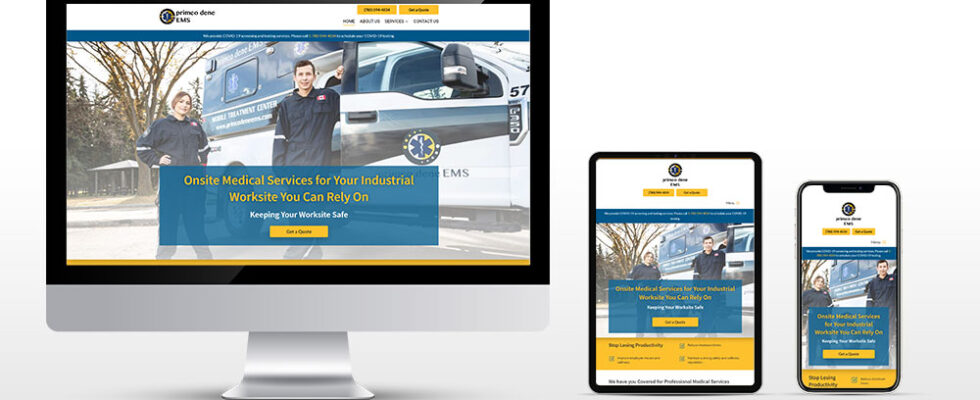Having a visually appealing website is not the only component of a successful online strategy. The true measure of success is how well your website functions on different types of devices. Your website will be accessible, easy to use, and able to turn visitors into leads and customers if it has responsive web design and development. These components are essential for companies looking to succeed in the digital sphere, as they can boost user experience and SEO rankings. This blog examines how responsive design and development are essential for building a strong online presence and realizing the full potential of your company.
The Importance of Responsive Web Design
Responsive web design is the process of crafting websites that provide optimal viewing and interaction experiences across a wide range of devices, from desktops to mobile phones. Without it, businesses face significant challenges:
- User Experience and Navigation: A website that isn’t responsive can frustrate users, leading to high bounce rates. Poor navigation and a disjointed user experience can deter potential customers, ultimately affecting your bottom line. In fact, 57% of internet users say they won’t recommend a business with a poorly designed mobile site.
- SEO and Search Engine Rankings: Google prioritizes mobile-friendly websites in its search results. A non-responsive site can lead to lower rankings, reducing your visibility and organic traffic.
- Lead Generation and Conversion: An effective online strategy hinges on converting visitors into leads. If your site doesn’t function well on mobile, you miss out on capturing a significant portion of potential leads. According to recent studies, businesses that implement responsive web design see a 20% boost in traffic.
The Pitfalls of Non-Responsive Design
Consider a business investing heavily in Facebook ads. Despite the investment, the lack of a responsive website can hinder potential customers from engaging with the site, leading to a poor return on investment. This issue is compounded when users, dissatisfied with their navigation experience, abandon the site without converting.
A non-responsive design impacts SEO efforts as well. Google’s mobile-first indexing means that a site not optimized for mobile can suffer in search rankings, leading to less organic traffic and fewer business opportunities.

The Solution: Responsive Website Development
Responsive website development involves creating a website that adjusts seamlessly to different screen sizes and devices, ensuring a smooth, functional experience for every user. Here’s how it benefits your business:
- Enhanced User Experience: A responsive site ensures that all users, regardless of their device, have a pleasant experience. This satisfaction can lead to higher engagement rates and increased chances of conversion.
- Improved SEO: Responsive design meets Google’s criteria for mobile-friendliness, which can boost your search engine rankings. Higher rankings translate to more visibility and traffic.
- Increased Lead Generation: By providing a seamless user experience, a responsive site can improve lead generation efforts, capturing more potential customers and increasing conversion rates. A responsive website can improve user experience, leading to a 40% increase in mobile conversions.
Technical Aspects and Framework
Responsive web design is not just about aesthetics; it involves a range of technical tasks and frameworks that make a website adaptable and functional across various devices. Key components include:
- Fluid Grid Layouts: This technique uses relative units like percentages rather than fixed units like pixels to ensure the layout adjusts smoothly to different screen sizes.
- Flexible Images and Media: Ensuring that images and media scale appropriately within their containing elements prevents them from breaking the layout on smaller screens.
- CSS Media Queries: These allow the application of different styles based on the device’s characteristics, such as width, height, and resolution, ensuring the site looks good on all devices.
By implementing these techniques, businesses can create websites that not only meet user expectations but also satisfy search engine requirements, leading to better rankings and increased visibility.
The Value of Professional Services
While DIY approaches to responsive web design and development are possible, they often fall short of professional standards. Here’s why investing in expert services can make a significant difference:
- Technical Expertise: Professionals bring a wealth of knowledge and experience, ensuring your site is built on a solid foundation with the latest best practices.
- Customized Solutions: Professional developers can tailor your website to meet specific business needs, ensuring it aligns with your brand and objectives.
- Ongoing Support and Maintenance: Professional services often include ongoing support and maintenance, helping you stay ahead of technological changes and user expectations.
Conclusion
Not only are responsive web design and development popular, but they are also necessary elements of an effective online strategy. They increase engagement and conversions, boost SEO, and improve user experience. The success of your business and its online presence can be greatly impacted by investing in expert services to ensure your website is responsive. Responsive design helps build a useful, user-friendly, and visually appealing website that supports your business objectives and optimizes return on investment by considering the needs of search engines and users.


